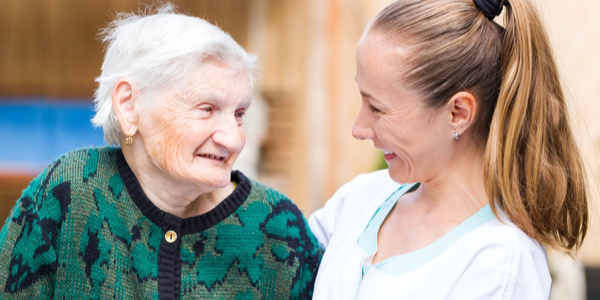
How can we make Aged Care live up to its name?

It's hard enough admitting our own mortality. So it's perhaps no surprise that another inevitability of getting on, namely aged care, is often pushed into our 'too hard' basket.
Anyone who has navigated the existing system, either for themselves or a family member, will attest to its many difficulties, as highlighted by the damning findings of the Royal Commission.
So what as a nation, as well as individuals, are we to do?
Last week's release of the Royal Commission report into Aged Care Quality and Safety exposed the underbelly of substandard care - and an appalling lack of care.
As well as the horror stories, the commission found almost one-third or 30% of residents have been subjected to what it defined as sub-optimal care.
It's hard to relate to how life must be in such institutions where many suffer from dementia, are too readily restrained by chemical and physical means, and left to sit or lie in their own waste.
It's little better to reflect on the undue and unnecessary misery caused by an inadequate and often frankly lousy diet.
On average, it was found that a paltry $6 per day was budgeted on food for each care resident. For three meals a day, that's just two bucks. Try eating on that princely sum for long.
The commission unearthed what it called 'staggering rates' of malnutrition and the wasting away of weight loss. And yes, this is in Australia. It recommended an immediate extra $10 a day be spent on food.
Given the many pressing problems about staff training, their low numbers and their poor pay rates, the $1 billion cost of this - just one of 148 recommendations - should make for a good start.
With 1.3 million older Australians in care the costs are considerable. We spend $26 billion on aged care annually with all but $5 billion of it subsidised by the government.
Yet even that is less than half of the amount budgeted by comparable OECD countries. On average, they spend 2.5 per cent of their GDP on the sector.
While we await the federal government's response to the commission, notably what they intend to do and how to pay for it, there are two main funding ideas on the table - none of them cheap.
In a split between the commissioners, one has proposed a one per cent levy on all workers to kick in within 18 months. Another Commissioner, Tony Pagone QC, suggests a levy that rises according to how old you are and how much you earn.
In the ultimate expression of user pays, he says in the report: "People should contribute to financing the aged-care system in accordance with their income over their entire lives."
All the time, demand is rising as Australians are ageing. Tens of thousands of new places will be needed in communal residential age care within a decade at the cost of $50 billion-plus.
Most older Australians prefer to remain in their own homes for as long as possible, but there's 100,000 on the waiting list to access home care packages.
Any waiting list can be a torment, but at these peoples' ages, 12 months long can mean it's too late to exercise any choice.
Improving food is, by comparison, an easy start. How we share the payments for the other much-needed reforms will kickstart what's daintily called a 'national conversation.'
It's likely to involve claims on assets such as the until-now exempt and sacrosanct family home. It's way past time we stopped avoiding aged care and started making it both better and fairer. Sooner or later, we'll probably need it.
Any information is general advice, it does not take into account your individual circumstances, objectives, financial situation or needs.

